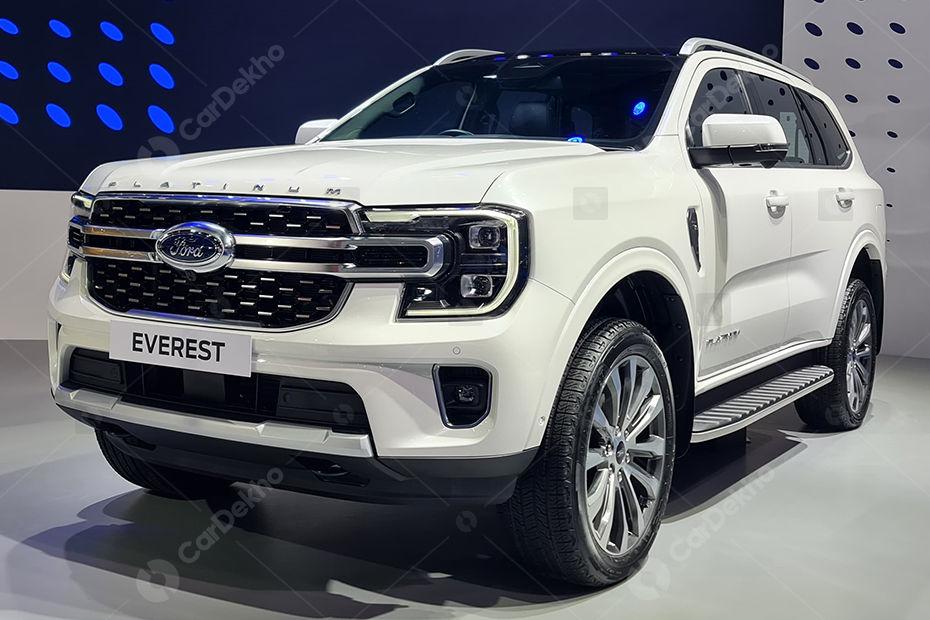Ford Empowers Women and Saves Lives in Rural India
Modified On Mar 07, 2013 06:52 PM By CarDekho
- Write a comment
Henry Ford believed vehicles like his Model T would improve lives through greater mobility. More than 100 years later on the other side of the world, a young Indian mother named Mageswari connects that vision with the birth of her healthy baby boy. Mageswari, 19, lives in Kodamaathi, a tiny village in rural India where Ford Motor Company just concluded a nine-month pilot program that entailed helping pregnant women overcome geographical and technological barriers that prevented them from receiving adequate healthcare.

Called Sustainable Urban Mobility with Uncompromised Rural Reach (SUMURR), the program made use of a Ford Endeavour SUV that was designed to handle the most difficult of terrains and traverse areas previously unreachable by four-wheeled vehicles. After arriving in rural areas, health professionals used laptops and cell phones to connect with doctors and medical help in ways they never have before.
As a result, SUMURR made safe childbirth possible for 41 pregnant women; women like Mageswari, who – with the help of the Ford Endeavour – was able to make it to the hospital in just enough time to give birth. “If not for Ford Endeavour, I might have tried to reach the hospital in a two-wheeler,” she says. “I do not know what might have happened.”

The intervention area of Kalvarayan Hills has a higher infant and maternity mortality rate compared with most other pockets of Tamil Nadu – a key indicator of the need for prenatal care in the region. Mageswari’s situation illustrates the kind of need that was addressed by SUMURR, and that’s where Ford comes in, according to David Berdish, manager of Social Sustainability.
Berdish says Ford is acting as an agent of change for a better world by forging innovative public-private partnerships with government, academic institutions, nonprofit stakeholders and company resources to support positive social advancement.

SUMURR represents the overall direction of such efforts. In fact, Berdish says similar projects are already being considered for other regions around the globe, including other parts of rural India, one in the state of Gujarat, India – where Ford has a manufacturing plant – and also in China and Brazil.
“Ford Motor Company is not in the business of telemedicine, but between the vehicle and the technology we provide, we can make it better,” says Berdish.
Coordinating with Ford on SUMURR were:
* Department of Health (DPH) of the Government of Tamil Nadu: Provided guidance and detailed statistics on maternal health and infant mortality; posed a challenge to Ford to pilot the program in Kalvarayan Hills, a region that is remote and hard to access
* U.S. Department of State: Provided guidance on program design and emphasized the need and role of healthcare for women
* George Washington University: Helped manage and track SUMURR
* IIT Madras Rural Technology and Business Incubator (RTBI): A nonprofit organization fostering entrepreneurship and focusing on technologies for rural India; developed and customized the mobile health applications used in SUMURR
* Reliance IIT Center of Excellence (RITCOE):Focuses on providing excellence in the areas of telecom infrastructure and energy; RITCOE was involved in developing solutions for SUMURR around OpenXC platform
* Indian Institute of Technology Madras: A premier academic institute that provides world-class education and research facilities in engineering and technology. It is officially recognized as an Institute of National Importance by the government of India and provides guidance to RTBI and RITCOE
* Hand in Hand India: A nonprofit organization with an overall mission to reduce poverty in India; Hand in Hand was the implementation partner helping to take the initiative to the community including training the government health workers with funding from Ford Motor Company Fund
* University of Michigan: Helped determine the viability of SUMURR prior to program launch














